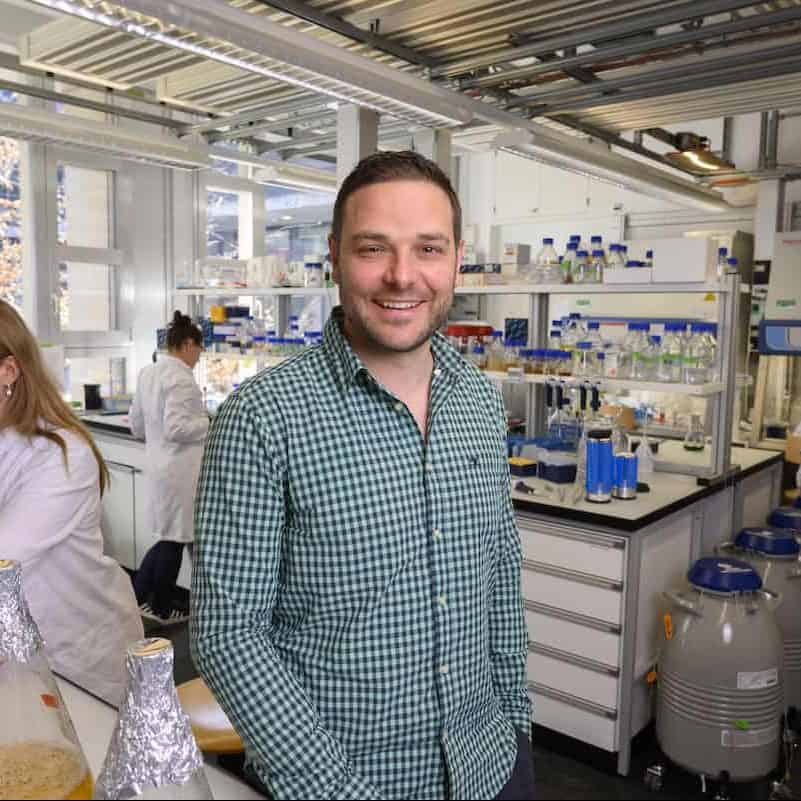NOMIS scientist Martin Pilhofer and colleagues have published their findings in Science, explaining how uromodulin filaments in urine bind the pili of uropathogenic bacteria and prevent them from adhering to the epithelium in the urinary tract.

Some people are better protected than others against urinary tract infections. This may be because their bodies produce more of a protein called uromodulin. An interdisciplinary research team has now found out how this helper protein brings relief when nature calls and how this knowledge might benefit the treatment and prevention of these painful inflammations.
Anyone who has ever had cystitis knows that urinary tract infections of this kind are annoying and painful. They can be well treated by antibiotics, but may be fatal if left untreated. These infections are usually caused by what are known as uropathogenic E. coli bacteria when they bind to the cells of the bladder, ureter or urethra with their pili, the thread-like appendages that grow out of them like hairs. But protection is at hand in the form of a certain protein, produced naturally in the body, called uromodulin. Around 70 percent of all people carry a uromodulin gene variant in their genome, which means that they produce this protective protein in particularly large quantities. Accordingly, they have a smaller risk of contracting urinary tract infections.

But the exact process by which uromodulin prevents inflammation had never been understood. Now an interdisciplinary team, drawn from three research groups at ETH Zurich together with researchers from the University of Zurich and the Children’s Hospital Zurich, has filled this knowledge gap by investigating uromodulin’s appearance and how the protein goes about neutralising uropathogenic E. coli. Their findings, which have been published in the journal Science, should help to develop new strategies for the treatment of urinary tract infections in the future.
A detailed look at how it works
First, the researchers analysed how the protein binds to the bacterial pili at the molecular level. “We already knew that a bond is formed and that this presumably plays a part in uromodulin’s protective function, but nobody had studied this in greater detail,” says Gregor Weiss, a doctoral student in molecular biology at ETH and one of the study’s lead authors. Their biochemical investigations have now shown that the bacterial pili recognise certain sugar chains on the surface of the uromodulin and bind to them extremely readily and strongly.
Next, the team examined uromodulin using cryo-electron tomography, an imaging technique that produces three-dimensional views of the structure of proteins and cells with no need for chemical modification or dehydration. This showed them that uromodulin forms long filaments consisting on average of around 400 individual protein molecules strung together. And that each link of this protein chain contains the characteristic pattern of sugar chains to which bacterial pili like to bind.
Continue reading this ETH Zurich release
Read the Science publication: Architecture and function of human uromodulin filaments in urinary tract infections
Related news
c&en: How uromodulin protein prevents urinary tract infections



